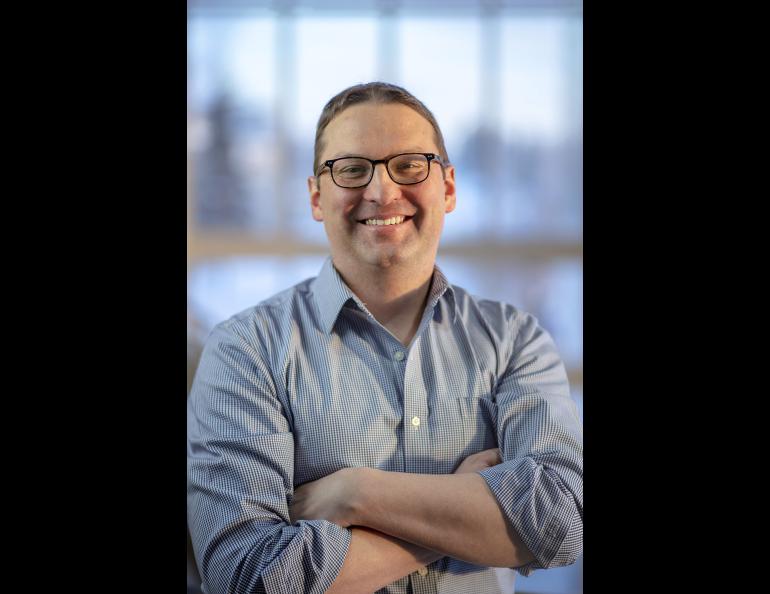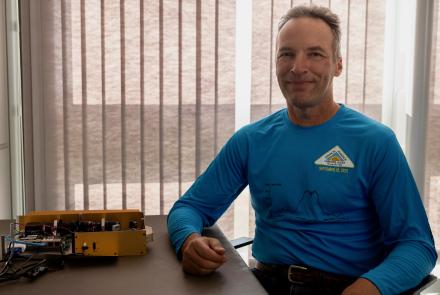
UAF remote sensing scientist receives international award
Remote sensing professor Franz Meyer of the University of Alaska Fairbanks has been honored by an international society for his education and outreach efforts.
Meyer, the chief scientist for the Alaska Satellite Facility at the UAF Geophysical Institute, received the award July 8 in Athens, Greece, at the annual meeting of the Geoscience and Remote Sensing Society, a global society within the Institute of Electrical and Electronics Engineers. The Education Award is one of four major honors the society bestows every year if a qualified candidate is identified.
The award is for Meyer’s “significant educational contribution to geoscience and remote sensing.”
“This honor is very rewarding, but almost as meaningful were the many positive comments I received from community members that benefitted from our efforts,” said Meyer, a professor who teaches through the UAF College of Natural Science and Mathematics.
Remote sensing involves detecting and measuring electromagnetic radiation, sound waves or other signals emitted or reflected by objects. Advancements in technology, increasing availability of satellite data and a growing demand for geographic and environmental data have expanded the field in recent years.
Meyer has led training sessions and taught short courses at universities and organizations in the United States and abroad, including in Niger, Nepal, Ecuador, Colombia, Costa Rica, India, Germany and France.
In the past five years, Meyer developed and taught a variety of new graduate-level courses with enrollment from students across the world.
He was one of the first UAF faculty to create online courses through UAF’s edX portfolio. Nearly 8,000 students took his three-course synthetic aperture radar series.
Meyer led the NASA-funded SAR Capacity Building Center at UAF. Throughout its five-year funding period, the center developed remote sensing training materials and held training workshops with a focus on communities in Central and South America. The project partnered with organizations in Ecuador, Colombia and El Salvador.
Materials developed as part of the project live on, as they were integrated into the curricula of several universities in Central and South America.
“They have taken all of the materials we’ve created, built it into their curricula and have started graduating students with a radar remote sensing focus,” Meyer said. “We get emails from people saying thank you, so we have clearly made an impact this way.”
Meyer’s love for spreading the word about synthetic aperture radar shows in his account name on X, formerly Twitter: @SARevangelist.
Meyer’s SAR outreach has also spread the word about UAF. He’s easily recognized at conferences, and some people even request a photo with him.
“It has taken on a little bit of a persona in that space and is interesting,” he said. “It has certainly carried my name and UAF’s name out there.”
“This honor by the society makes me happy because I put a lot of effort into education and outreach the last few years that has gone beyond my formal university appointment,” he said. “So it feels good to see that it's recognized and appreciated.”
The Geoscience and Remote Sensing Society has more than 4,200 members in 94 countries. It has 79 chapters, including 16 student chapters.
• Franz Meyer, University of Alaska Fairbanks Geophysical Institute, 907-474-7767, fjmeyer@alaska.edu
• Rod Boyce, University of Alaska Fairbanks Geophysical Institute, 907-474-7185, rcboyce@alaska.edu






